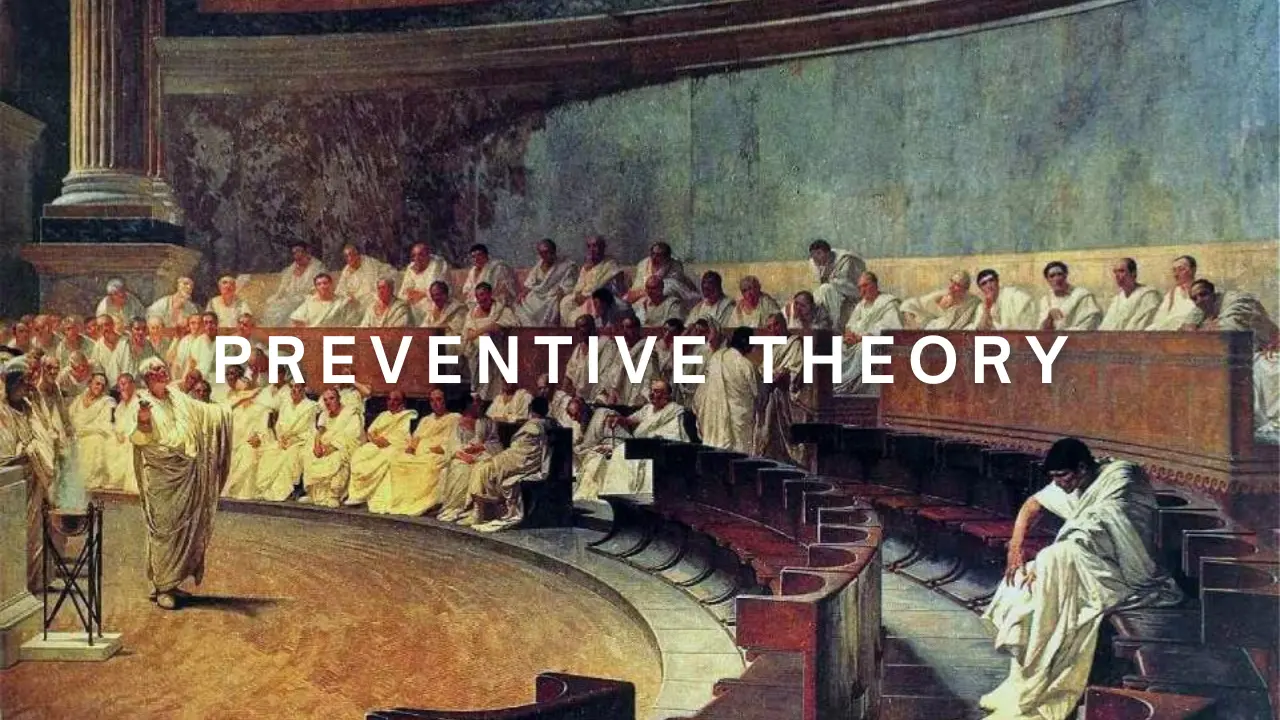Introduction
Fundamental Rights, enshrined in Part III of the Indian Constitution from Articles 12 to 35, are the cornerstone of democratic governance in India. They guarantee various freedoms and protections to individuals, ensuring justice, equality, and liberty. This post provides a detailed analysis of each article, accompanied by explanations and landmark case laws that have shaped their interpretation.
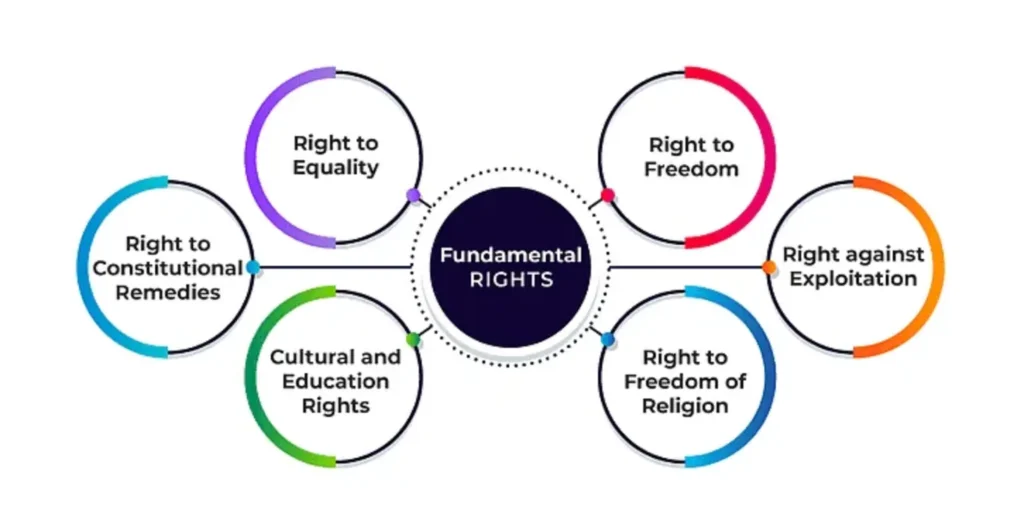
Right to Equality (Articles 14 to 18)

Article 14: Equality Before Law
Explanation: Article 14 embodies the principle of equality before the law and equal protection of laws. It ensures that every individual, irrespective of their status, receives equal treatment under the law. This principle prohibits arbitrary and discriminatory actions by the state and public authorities.
Case Law: Maneka Gandhi v. Union of India (1978) — The Supreme Court held that Article 14 mandates not just equality before the law but also equal protection of the laws. It broadened the scope of Article 14 by emphasizing that laws must be “just, fair, and reasonable.”
Article 15: Prohibition of Discrimination
Explanation: Article 15 prohibits discrimination on the grounds of religion, race, caste, sex, or place of birth. It also permits the state to make special provisions for women, children, and socially and educationally backward classes, promoting their upliftment.
Case Law: State of Madras v. Champakam Dorairajan (1951) — The Supreme Court struck down a reservation scheme based on caste in educational institutions, ruling that it was unconstitutional under Article 15 unless supported by a valid law.
Article 16: Equality of Opportunity in Public Employment
Explanation: This article guarantees equal opportunities in public employment. It prevents discrimination based on religion, race, caste, sex, or place of birth in public sector jobs and ensures fair recruitment practices.
Case Law: Indra Sawhney v. Union of India (1992) — Also known as the Mandal Commission case, the court upheld the constitutionality of reservations for backward classes but set limits to avoid excessive quotas, emphasizing the need for merit-based recruitment.
Article 17: Abolition of Untouchability
Explanation: Article 17 abolishes untouchability, a social practice that discriminates against certain communities. It is a fundamental step towards eliminating caste-based discrimination and ensuring social justice.
Case Law: People’s Union for Democratic Rights v. Union of India (1982) — The court extended the scope of Article 17 to include bonded labor, holding that such practices violate the principle of untouchability and are unconstitutional.
Article 18: Abolition of Titles
Explanation: This article prevents the state from conferring any titles on individuals, except for military and academic distinctions, to maintain equality and avoid the creation of a hierarchical class system.
Case Law: Balaji Raghavan v. Union of India (1996) — The court ruled that national awards like the Bharat Ratna do not violate Article 18 because they do not create a new class of citizens but are acknowledgments of service and achievement.
Right to Freedom (Articles 19 to 22)

Article 19: Protection of Certain Rights
Explanation: Article 19 guarantees six fundamental freedoms: speech and expression, assembly, association, movement, residence, and profession. These freedoms are not absolute and may be restricted by the state in the interests of public order, morality, and security.
Case Law: Romesh Thappar v. State of Madras (1950) — The Supreme Court ruled that restrictions on freedom of the press are unconstitutional if they do not meet the test of “reasonable restrictions” under Article 19(2).
Article 20: Protection in Respect of Conviction for Offences
Explanation: Article 20 provides protection against retroactive laws, double jeopardy, and self-incrimination. It ensures that laws enacted after the commission of an offense do not punish individuals, nor does it allow punishing someone twice for the same offense.
Case Law: Kartar Singh v. State of Punjab (1994) — The court upheld the constitutionality of anti-terror laws but emphasized that such laws must respect the protections under Article 20.
Article 21: Protection of Life and Personal Liberty
Explanation: Article 21 guarantees the right to life and personal liberty. Over time, this right now includes various other rights such as the right to privacy, the right to a clean environment, and the right to education.
Case Law: K.S. Puttaswamy v. Union of India (2017) — The Supreme Court recognized the right to privacy as an intrinsic part of Article 21, thereby expanding the scope of personal liberty.
Article 21A: Right to Education
Explanation: Introduced by the 86th Amendment Act, Article 21A mandates free and compulsory education for children aged 6 to 14 years. This provision aims to ensure that every child receives a basic education.
Case Law: Unni Krishnan v. State of Andhra Pradesh (1993) — The court recognized the right to education as a fundamental right under Article 21, highlighting the state’s obligation to provide free education.
Article 22: Protection Against Arrest and Detention
Explanation: Article 22 provides safeguards against arbitrary arrest and detention. It ensures that no person is detained without being informed of the grounds for their detention and is given the opportunity to challenge it in court.
Case Law: A.K. Gopalan v. State of Madras (1950) — The court initially took a narrow view of Article 22, but later cases, including Maneka Gandhi, broadened its interpretation to include procedural safeguards against arbitrary detention.
Also Read: citizenship of India Art 5 to 11
Right against Exploitation (Articles 23 and 24)
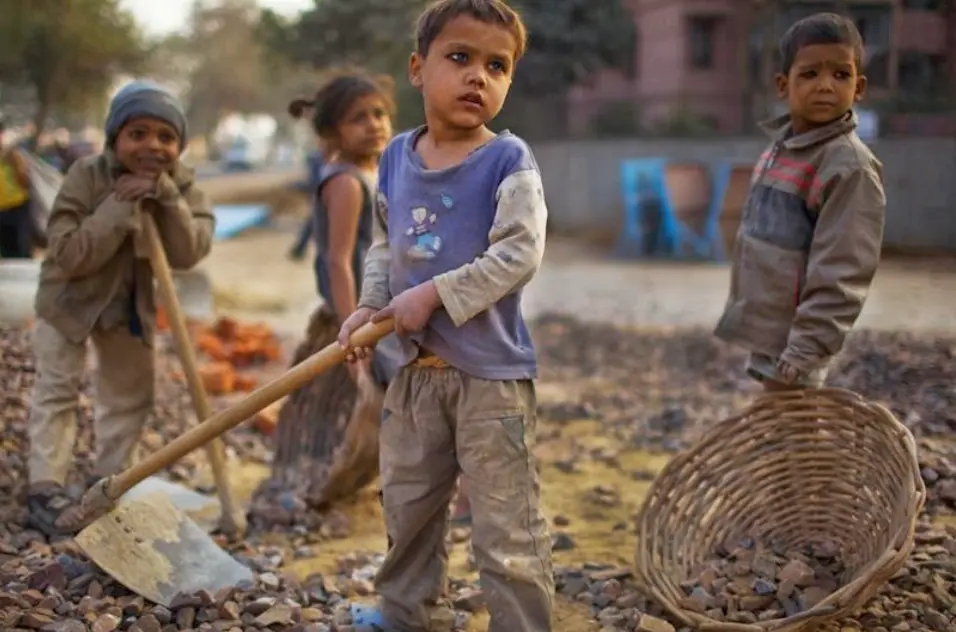
Article 23: Prohibition of Human Trafficking and Forced Labor
Explanation: Article 23 prohibits human trafficking, forced labor, and other forms of exploitation. It is aimed at protecting individuals from being coerced into labor or trafficking.
Case Law: Bandhua Mukti Morcha v. Union of India (1984) — The court held that bonded labor constitutes a form of forced labor and is banned under Article 23.
Article 24: Prohibition of Child Labor
Explanation: Article 24 prohibits the employment of children under the age of 14 in hazardous occupations like factories and mines. It aims to protect children from exploitation and ensure their well-being.
Case Law: M.C. Mehta v. State of Tamil Nadu (1996) — The court emphasized strict enforcement of Article 24, banning the employment of children in hazardous industries and calling for effective measures to protect child workers.
Right to Freedom of Religion (Articles 25 to 28)
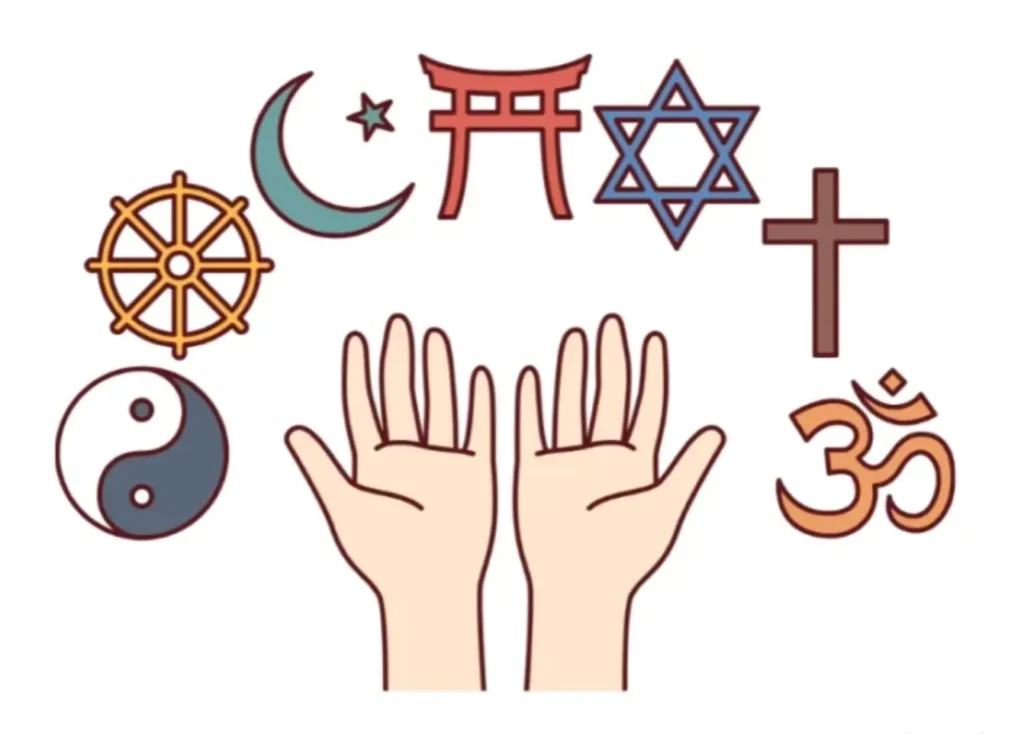
Article 25: Freedom of Conscience and Religion
Explanation: Article 25 guarantees the freedom of conscience and the right to profess, practice, and propagate religion. This right is subject to public order, morality, and health.
Case Law: Shirur Mutt Case (1954) — The Supreme Court held that religious practices essential to a religion are protected under Article 25, but practices that are not integral to religious belief can be regulated.
Article 26: Freedom to Manage Religious Affairs
Explanation: Article 26 grants religious groups the right to manage their own religious affairs, including the administration of property, subject to public order and morality.
Case Law: S.P. Mittal v. Union of India (1983) — The court ruled that the management of religious affairs must be an essential aspect of religion and not merely incidental.
Article 27: Freedom from Taxes for Religious Purposes
Explanation: Article 27 prohibits the state from using tax revenue to promote any particular religion, ensuring that public funds are not used for religious purposes.
Case Law: Commissioner of Hindu Religious Endowments v. Sri Lakshmindra Thirtha Swamiar (1954) — The court upheld that taxes levied for the promotion of religious purposes are unconstitutional under Article 27.
Article 28: Freedom from Religious Instruction in State-run Institutions
Explanation: Article 28 ensures that no individual is compelled to participate in religious instruction or worship in state-funded educational institutions.
Case Law: Aruna Roy v. Union of India (2002) — The court clarified that while state-funded institutions cannot impose religious instruction, they can include moral or value-based education that does not promote any specific religion.
Cultural and Educational Rights (Articles 29 and 30)
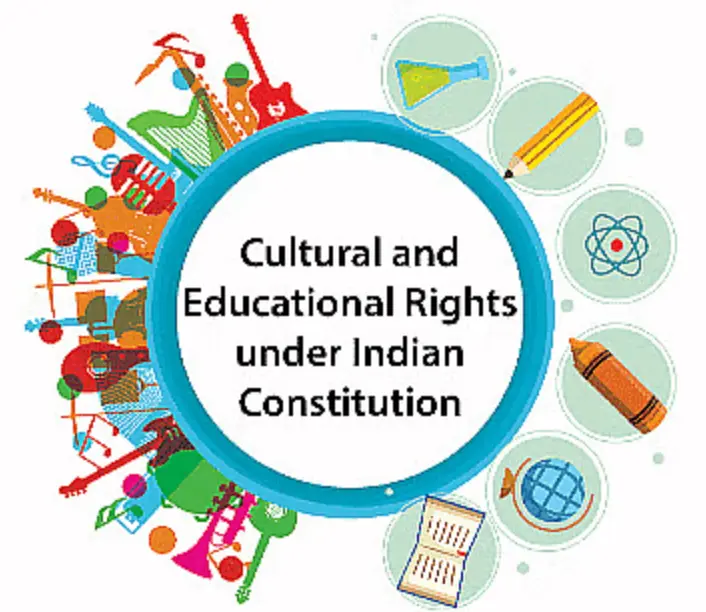
Article 29: Protection of Interests of Minorities
Explanation: Article 29 protects the interests of minorities by allowing them to conserve their language, script, and culture. It ensures that minority groups can preserve their distinct identity.
Case Law: State of Bombay v. Bombay Education Society (1954) — The court upheld the right of minorities to admit students of their choice in their educational institutions, reinforcing their cultural and educational rights.
Article 30: Rights of Minorities to Establish Institutions
Explanation: This article allows minorities to establish and administer educational institutions of their choice. It ensures that minority communities can run their institutions according to their own ethos and cultural values.
Case Law: T.M.A. Pai Foundation v. State of Karnataka (2002) — The court defined the extent to which the state can regulate minority educational institutions, balancing minority rights
Right to Constitutional Remedies (Articles 32 to 35)
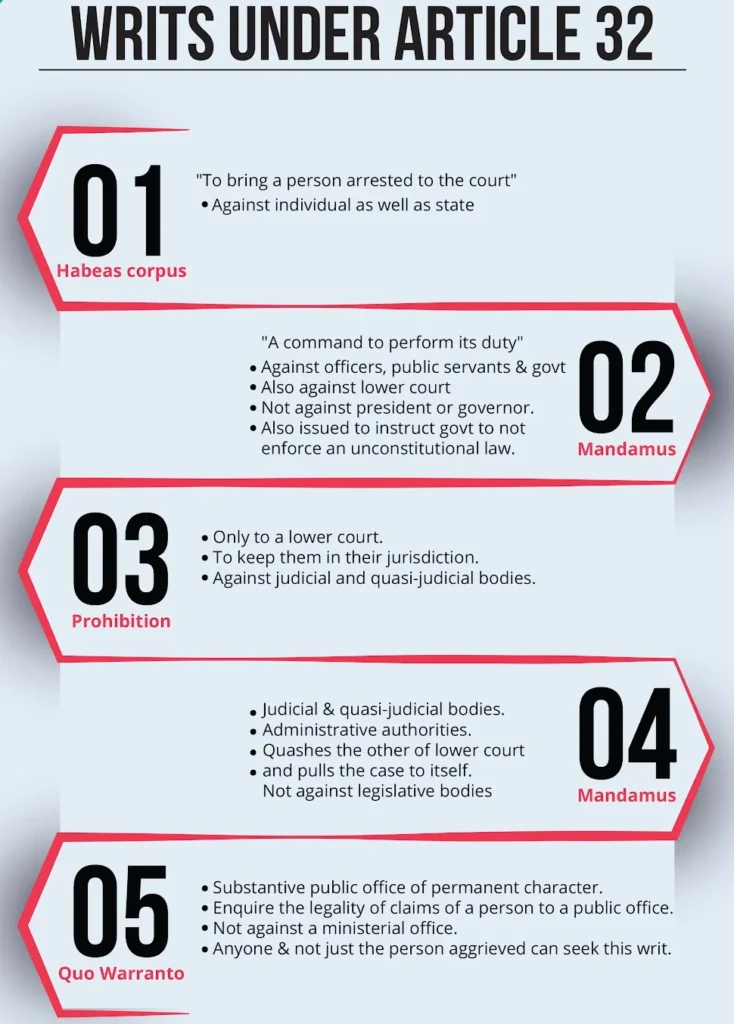
Article 32: Right to Constitutional Remedies
Explanation: Article 32 empowers individuals to directly approach the Supreme Court for the enforcement of Fundamental Rights. This article is crucial as it provides a remedy against the violation of these rights and ensures their protection through judicial intervention.
Case Law: Keshavananda Bharati v. State of Kerala (1973) — The Supreme Court affirmed that Article 32 is a fundamental feature of the Constitution’s basic structure. The court held that no amendment can alter the essence of Fundamental Rights, thereby reinforcing the importance of Article 32 in protecting these rights.
Article 33: Power to Modify the Rights of Armed Forces
Explanation: Article 33 allows Parliament to modify Fundamental Rights for the armed forces, police, and other paramilitary forces, in the interests of discipline and proper functioning. This modification is permissible as long as it is reasonable and necessary for the effective discharge of their duties.
Case Law: S.R. Bommai v. Union of India (1994) — The Supreme Court clarified that while Article 33 permits modifications, it must not completely negate Fundamental Rights. The court emphasized that modifications should be reasonable and not infringe upon the core essence of these rights.
Article 34: Restrictions on Fundamental Rights While Martial Law is in Force
Explanation: Article 34 provides that during the imposition of martial law, Fundamental Rights may be restricted to ensure the proper functioning of military operations and the maintenance of law and order.
Case Law: State of Punjab v. Ajaib Singh (1994) — The court examined the extent to which Fundamental Rights can be restricted under martial law, stressing that such restrictions must be within the bounds of necessity and proportionality.
Article 35: Legislation for the Enforcement of Fundamental Rights
Explanation: Article 35 empowers Parliament to enact laws for the enforcement of Fundamental Rights. This ensures that laws are in place to uphold and protect these rights and provides a legal framework for their implementation.
Case Law: Kartar Singh v. State of Punjab (1994) — The court upheld the power of Parliament under Article 35 to enact legislation to address violations of Fundamental Rights, provided that such laws do not contravene the basic structure of the Constitution.
Conclusion
Fundamental Rights are the bedrock of the Indian Constitution, ensuring justice, equality, and freedom for all citizens. They provide a robust framework for protecting individual liberties and upholding democratic values. Each article, backed by landmark case laws, offers a detailed perspective on how these rights are interpreted and enforced.
FAQs
1. What are the Fundamental Rights enshrined in the Indian Constitution?
Fundamental Rights are rights guaranteed by the Constitution to protect individual freedoms and ensure equality and justice. They include the right to equality, freedom of speech, protection against exploitation, and more.
2. How can individuals enforce their Fundamental Rights?
Individuals can directly approach the Supreme Court under Article 32 or the High Courts under Article 226 for the enforcement of Fundamental Rights.
3. Are there any limitations to Fundamental Rights?
Yes, Fundamental Rights are subject to reasonable restrictions in the interests of public order, morality, and the sovereignty of the state. Specific articles also allow modifications for certain groups, like the armed forces.
4. Can Fundamental Rights be amended?
While Fundamental Rights can be amended, such amendments cannot alter the basic structure of the Constitution, as established in the Keshavananda Bharati case.
5. What role do the courts play in protecting Fundamental Rights?
The judiciary, especially the Supreme Court, plays a crucial role in interpreting and protecting Fundamental Rights through judicial review, ensuring that laws and actions conform to constitutional principles.
Also Read: Union and Its Territory
Reference: clearias.com
